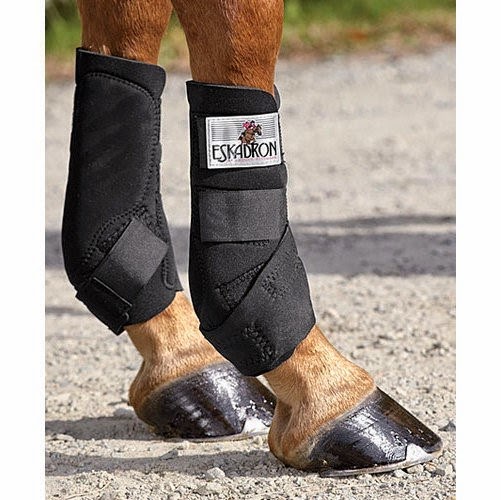Some Basics
- Don't let a horse push you around, you could get seriously hurt. Be confident. Be in charge.
- When leading one horse, walk on the left side of the horse with two hands on the rope (one near the halter and the other holding the slack rope).
- When leading a horse, make sure the rope is not wrapped around your fingers. If the horse spooks and pulls on it, you could injure your fingers.
- Do not lead more than 2 horses at once, even if you think you can manage it, because horses can be unpredictable. So take the extra tip for everyone safety, including your own.
- Double check that the stalls are latched when you put horses away, and that gates are latched when you put horses in the pastures.
.jpg) |
 |
| Parts of a Western Saddle |

 |
Boots |


Horse Blanket and Fly Mask
Curry Brush
Lunge Rope
Horse Crop
Horse Anatomy
Basic Terms
- Mare: Female horse
- Gelding: Male horse that's unable to reproduce
- Stallion: Male horse that's able to reproduce
- Filly: Female baby horse
- Colt: Male baby horse
- Hands (hh): Unit of measurement equal to 4 inches
(some)Breeds
•Thoroughbred: Large, expressive eyes; exceptionally long, sloping shoulders; fine-boned legs with small hooves; thin skin. Bred primarily for racing, also excels at dressage, eventing, and jumping; possesses great stamina and courage; bred extensively to improve other breeds
•Morgan: Fine head with arched neck; well-defined withers; long, sloping shoulders; muscular hindquarters. Descended from one prepotent stallion; noted for its versatility; possesses great stamina.
•Quarter Horse: Short, fine head with a straight profile; short back; long, powerful croup and shoulders; well-muscled thighs, gaskins, and forearms. One of the most popular breeds; noted for its agility and quick bursts of speed; adapts easily to any riding discipline
•Arabian: Head profile is uniquely concave (dished), tapering to a dainty muzzle; wide-set, large eyes; long, graceful neck; short back; flat croup with distinctive high tail carriage. Has refined almost every breed worldwide; considered one of the most beautiful horses; noted for its stamina, excels in endurance competitions
•Paint: Two color patterns—overo and tobiano—determined by location of white markings, developed from quarter horse, thoroughbred, and paint breeds; versatile riding horse
•Appaloosa: Several color patterns: snowflake, leopard, marble, frost, and blanket; black and white striped hooves. Descended from the spotted horses of the Nez Percé Indians; influenced by Arabian and, most recently, American Quarter Horse blood
Colors





.jpg)
